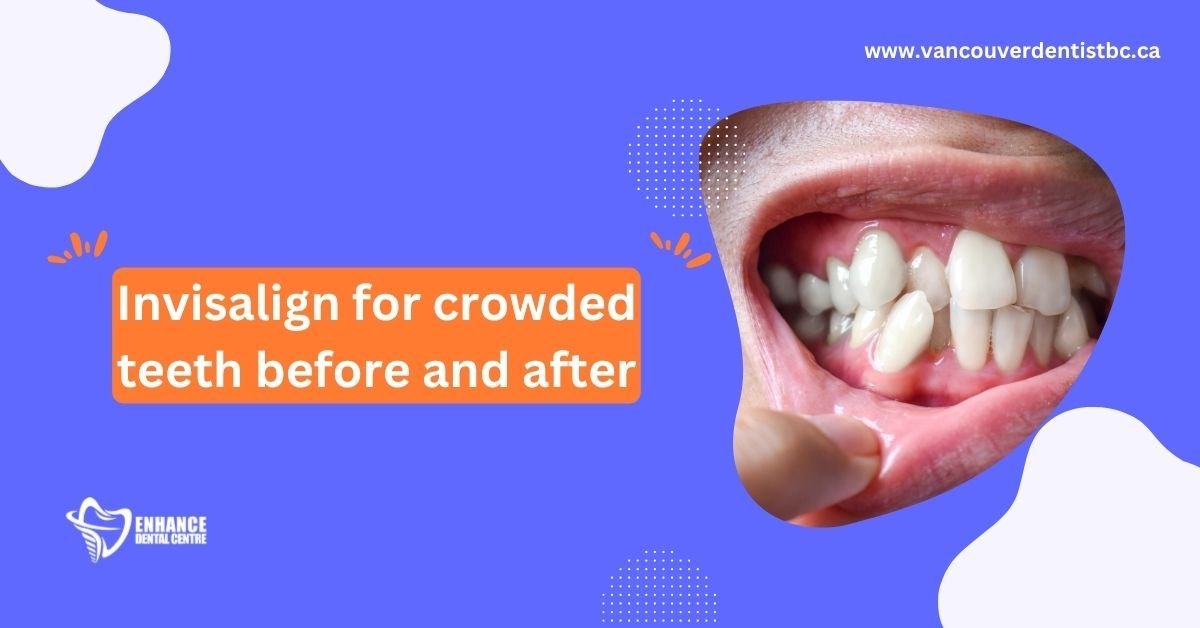A root canal is a widely performed dental procedure that saves teeth severely damaged or infected by decay. While its primary goal is to relieve the intense pain caused by tooth infections, some patients may experience mild discomfort after the procedure.
Post-root canal pain can result from several factors, including natural healing or inflammation in the surrounding tissues. Understanding the causes, symptoms, and treatments for root canal pain can help you manage any discomfort and recover smoothly.
At Enhance Dental Centre, your comfort is our priority. We’re here to guide you through every step of your dental care journey.
Reasons You May Experience Pain After a Root Canal
While root canals are designed to alleviate pain from infected or damaged teeth, some patients may feel discomfort afterward. This pain can stem from natural healing or minor treatment-related issues.
Knowing the difference between normal recovery discomfort and symptoms requiring further attention can help ensure a smooth recovery.
Here are some common reasons for post-root canal pain:
Post-Procedure Inflammation
Mild discomfort after a root canal is often caused by inflammation in the surrounding tissues. This swelling may result most often from residual infection in the tooth ligament or irritation from the procedure itself. Fortunately, this type of discomfort typically resolves on its own within a few days to weeks.
Infected Root Canal
In rare cases, a tooth can become reinfected if tooth structure is compromised and allows bacteria to enter the canal. This is why many teeth that undergo root canals are fitted with crowns for added protection.
Treatment options for an infected root canal often include:
- A second root canal procedure (Re-Treatment).
- Tooth extraction, if absolutely necessary.
Antibiotics alone are usually insufficient to address these infections.
Infection in the Bone
Some bacteria may linger in the bone near the treated tooth, leading to pain and inflammation. Although this type of infection can be uncomfortable, it is typically easy to treat.
- The immune system often clears residual bacteria after the dead tooth and nerve are removed.
- Antibiotics may be prescribed to speed up recovery.
Missed Canal
Each tooth contains small canals that house blood vessels and nerves. Some teeth have multiple canals, and occasionally, one may be undetectable during the procedure.
If a missed canal becomes infected, you may experience:
- Sensitivity to hot or cold.
- Persistent pain.
In such cases, a follow-up root canal may be required to address the issue.
Cement or Air Forced Through the Root Tip
In some rare cases during the procedure, excess dental cement may leak out of the root tip, causing irritation or pain. Additionally, air bubbles can sometimes be forced through the root tip, creating pressure and discomfort.
- These issues often resolve on their own as the body heals.
- If discomfort persists, consult your dentist for further evaluation.
Phantom Pain
Rarely, patients experience phantom pain after a root canal. This occurs when the nerve leading to the tooth remains sensitive, even after the diseased portion has been removed.
- Phantom pain generally diminishes over time.
- Relaxation techniques or consultation with your dentist can help manage lingering discomfort.
Crown or Filling adjustment needed.
If the crown or filling placed after a root canal is too large or tall, you may feel pain or pressure when biting.
- A quick adjustment by your dentist can resolve this issue.
- Allow a few days to fully adjust to the new shape and feel of the tooth.
Root Canal Symptoms
If you suspect you may need root canal therapy, it’s crucial to visit your dentist promptly. Early treatment often results in better outcomes, so keep an eye out for the following warning signs:
Persistent Pain
Constant or recurring tooth pain is a common sign that you may need a root canal. The pain can feel deep in the tooth or extend to your face, jaw, or surrounding teeth.
Other potential causes of tooth pain include gum disease, cavities, sinus infections, or damaged fillings. Regardless of the cause, prolonged pain warrants a visit to your dentist for early diagnosis and treatment.
Temperature Sensitivity
Sensitivity to hot or cold foods and drinks is another indicator. While not all sensitivity leads to a root canal, it’s best to have your dentist determine the underlying cause.
Swollen or Tender Gums
Swelling near a painful tooth could signal the need for a root canal. This swelling may come and go and might be tender to the touch. Acidic waste from dead pulp tissues often causes this inflammation near the root tip.
In some cases, you may notice a small pimple or abscess (gum boil) on your gums. This pimple may release pus, resulting in a bad breath or taste.
Tooth Discoloration
An infected pulp can cause your tooth to appear discolored, often turning grayish-black. Trauma or internal tissue breakdown can also lead to discoloration. While other factors might cause colour changes, consult your dentist if you notice significant darkening.
Tooth Mobility
An infected tooth may feel loose due to weakened bone surrounding its root. If multiple teeth feel loose, the issue may not be related to a root canal.
Tooth Damage
Cracks or breaks in a tooth can expose the pulp to bacteria, leading to infection. Even if a tooth isn’t visibly chipped, trauma can still damage the nerves, causing pain, sensitivity, or inflammation that may require a root canal.
How do you calm post-root canal pain?
Post-root canal pain is typically mild and subsides within a few days. Most patients feel significant relief compared to the pain caused by the initial infection. Severe pain is rare, but you may experience tenderness or sensitivity as your mouth heals.
Here are simple tips to manage discomfort after a root canal:
- Apply an Ice Pack
Use an ice pack on the outside of your cheek to reduce pain and swelling. Apply it for 15–20 minutes at a time. - Take Over-the-Counter Pain Relievers
Medications like ibuprofen or acetaminophen can help alleviate pain and inflammation. Follow the dosage instructions on the label. - Gargle with Saltwater
Mix one teaspoon of salt in a glass of warm water and gargle 2–3 times daily. This helps soothe the area, fight infection, and promote healing. - Elevate Your Head While Sleeping
Sleeping with your head elevated can reduce blood flow to the affected area, preventing throbbing pain.
Important: If pain persists beyond a few days or becomes severe, contact your endodontist or dentist immediately for further evaluation.
Conclusion
Root canal pain is typically mild and subsides within a few days as your body heals. While some discomfort is normal, persistent or worsening pain could signal an issue that needs attention. Understanding the causes, symptoms, and treatment options empowers you to manage your recovery confidently.
If you notice unusual symptoms or have concerns, don’t hesitate to reach out to Enhance Dental Centre. Our team is dedicated to providing personalized care and support, ensuring your treatment journey is as comfortable and effective as possible.









